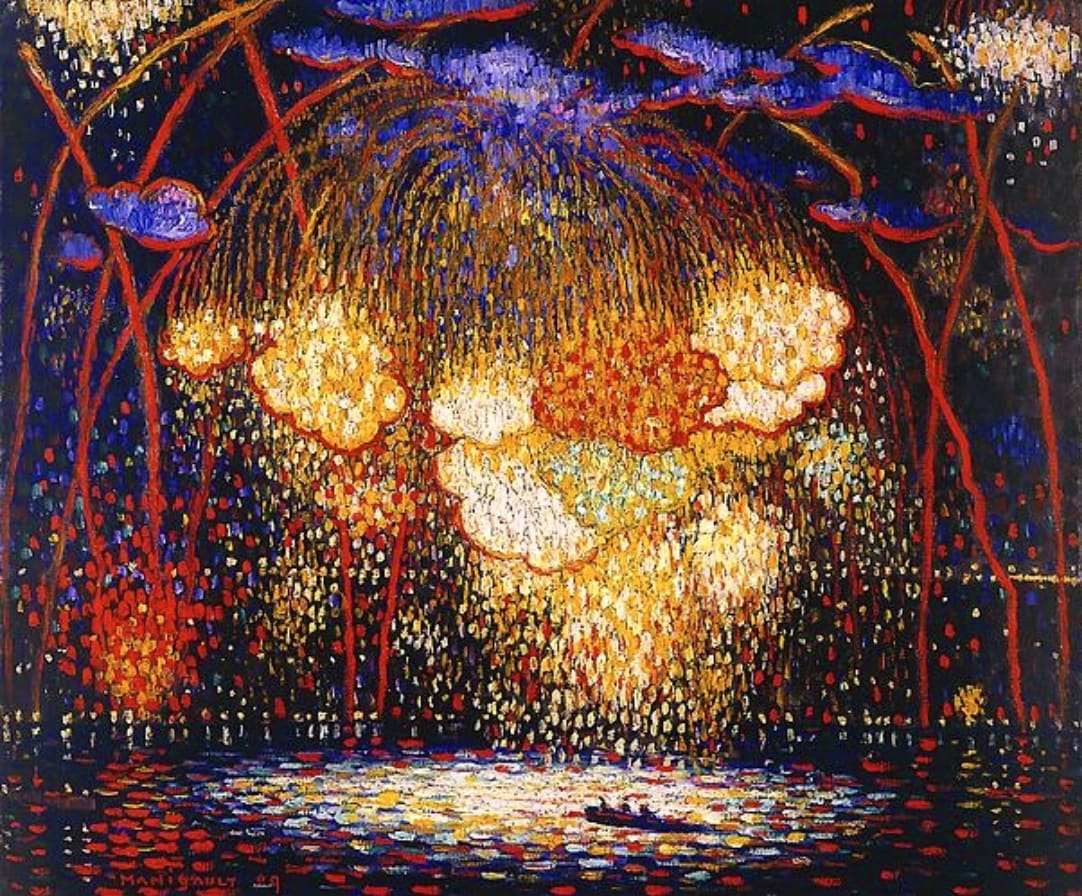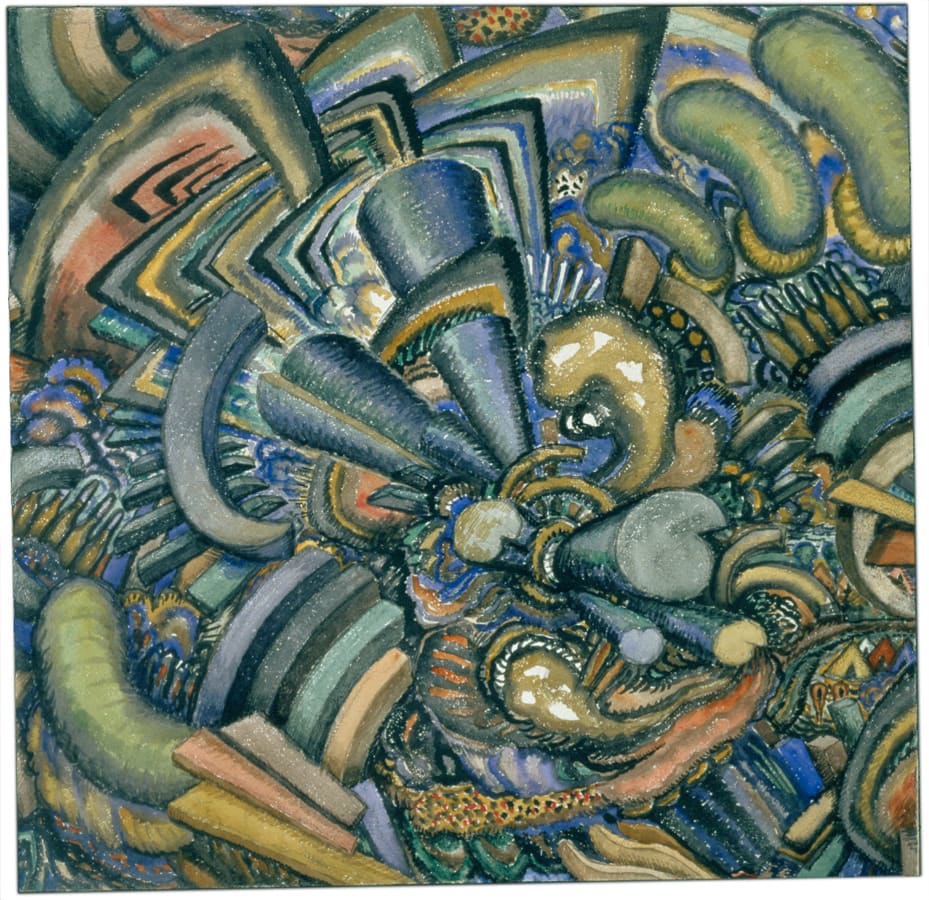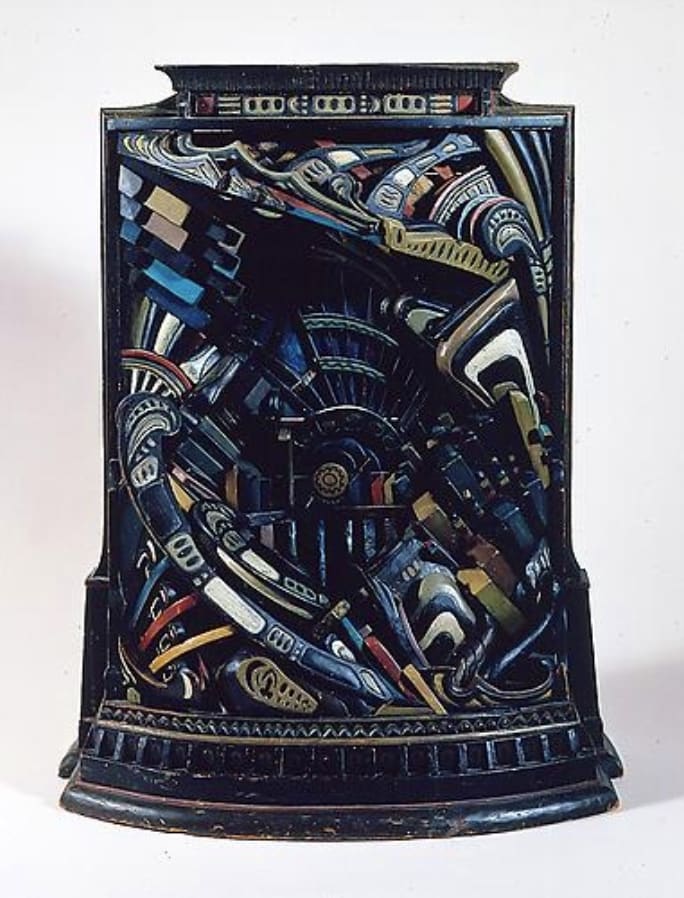
His work exemplifies—indeed, encapsulates—the experimental nature at the heart of modern art.
When Middleton Manigault inadvertently starved himself to death at the age of 35 in an attempt to "see colors not perceptible to the physical eye," he ended a short but distinguished career as a pioneering modern artist. Opening Tuesday, May 21 at Hollis Taggart Galleries, Middleton Manigault: Visionary Modernist is the first major exhibition to present the eclectic, highly personal creations of this previously neglected modernist master. It features approximately 50 rarely exhibited works, including oil paintings, watercolors, pastels, etchings, wood sculpture, and ceramics, and showcases masterpieces loaned from both public and private collections across the United States and Canada, including several seminal works such as The Clown, which was exhibited at the 1913 Armory Show. This traveling exhibition, which was organized by the Columbus Museum of Art in cooperation with Hollis Taggart Galleries, will be on view at the gallery through Saturday, July 19, 2002.
When Middleton Manigault inadvertently starved himself to death at the age of 35 in an attempt to "see colors not perceptible to the physical eye," he ended a short but distinguished career as a pioneering modern artist. Opening Tuesday, May 21 at Hollis Taggart Galleries, Middleton Manigault: Visionary Modernist is the first major exhibition to present the eclectic, highly personal creations of this previously neglected modernist master. It features approximately 50 rarely exhibited works, including oil paintings, watercolors, pastels, etchings, wood sculpture, and ceramics, and showcases masterpieces loaned from both public and private collections across the United States and Canada, including several seminal works such as The Clown, which was exhibited at the 1913 Armory Show. This traveling exhibition, which was organized by the Columbus Museum of Art in cooperation with Hollis Taggart Galleries, will be on view at the gallery through Saturday, July 19, 2002.
Manigault’s contributions to the history of Modernism have been largely overlooked because of his early death, his reclusive lifestyle, and the undocumented dispersal of much of his work. Furthermore, the artist, suffering from depression and fits of hysteria, destroyed a large number of his paintings shortly before his death in 1922. All of these factors have resulted in a lack of public and scholarly attention devoted to Manigault’s art until recently.
Manigault’s career was characterized by incessant experimentation, and his works are remarkable for their decorative sense and imaginative spirit. Unlike many artists of the period, whose reputations rested on a signature style, Manigault found inspiration in an exciting range of artistic tendencies that flourished during Modernism’s formative years. His work exemplifies—indeed, encapsulates—the experimental nature at the heart of modern art.
Manigault’s wide-ranging explorations are reflected by the retrospective nature of this type of exhibition. By 1909, in works such as The Rocket and Christ Appearing to Mary, Manigault had adopted a bold palette consisting of primary colors, and implemented a technique derived from pointillism to construct energetic, vibrant compositions. This dappling of bright colors in The Rocket contributes to the motion and liveliness of the fireworks scene. Subsequently, Manigault opted for a more muted color scheme, overall decorative patterning, and rhythmic, frieze-like arrangements. Procession, a work first acquired by the prescient collector Ferdinand Howald, heralds this shift in artistic direction in 1911. With this turn towards somber tones and more static compositions, Manigault infuses his painting with a sense of the mystical, evident in The Clown of 1912. Other works, such as Six Women, Adagio and The Source, reveal the dark symbolism that preoccupied Manigault during this period.
1915 changed the course of Manigault’s career, due to the postponement of his painting in order to volunteer as an ambulance driver in the war. Following his return from service, Manigault produced numerous paintings, now unlocated, bearing titles pertaining to the war. The only known extant work relating directly to his military experiences is Vorticist Landscape (War Impression), where the thrusting diagonals, artillery shells, and dynamism reflect the tumultuous conditions of war. A stylistic corollary to this work is a free-standing painted wood assemblage, Fantasy Construction, that reveals Manigault’s talent for expressing his modernist vision in other mediums. Towards the end of his brief career, Manigault painted instensely colored still life arrangements that reflected his penchant for rich patterning and decoration. These arrangements, inspired by Oriental motifs, often featured ceramic vases and plates, a number of which Manigault likely created during his sojourn with the utopian Oneida Community. Although few of these decorative objects survive, they are testament to Manigault’s commitment to pursuing different means of achieving his artistic goals.
An accompanying exhibition catalogue, published by Hollis Taggart Galleries, is the first major publication devoted to exploring Manigault’s life and work. Beth Venn, noted Manigault scholar and guest curator of the exhibition, provided a detailed essay on Manigault’s diverse career, including his investigations of the decorative arts. In addition to Venn’s essays, the catalogue also includes essays by Nannette V. Maciejunes, Senior Curator of the Columbus Museum of Art, and Angela Mack, Curator of Collection of Gibbes Museum of Art.
From its conception, this exhibition has been a truly collaborative venture of the Columbus Museum of Art, Beth Venn, and Hollis Taggart Galleries, and has been a project all those involved believe will contribute to the scholarship of this visionary modernist artist. As with Hollis Taggart Galleries’ previous series of exhibitions, Middleton Manigault: Visionary Modernist maintains our abiding commitment to unearthing currents in American art which have hitherto been unexplored.













